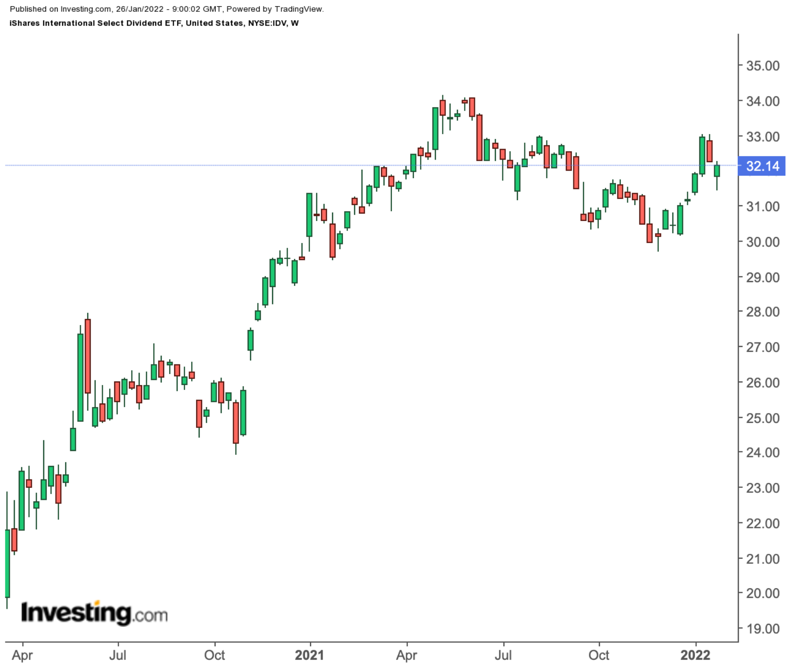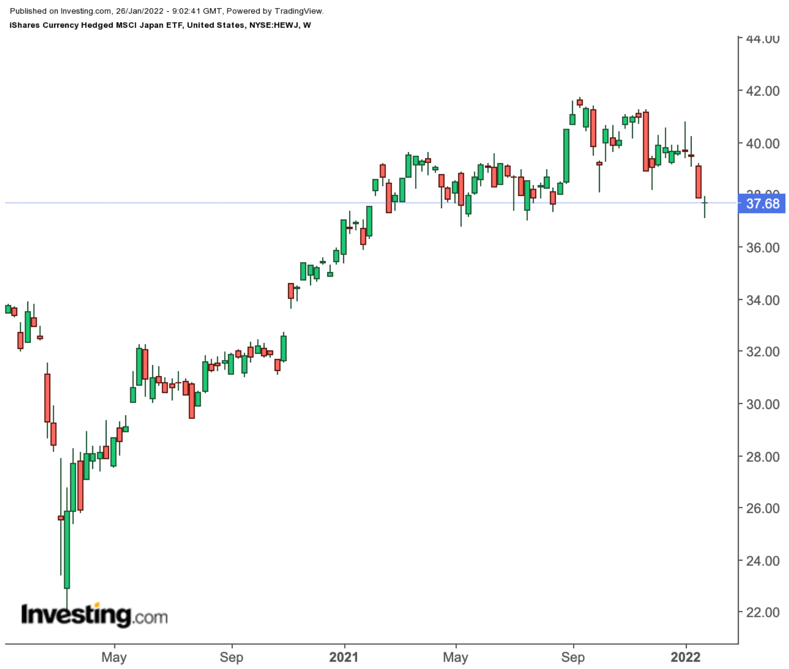Volatility is back on Wall Street, just as many analysts predicted. The widely-followed VIX index is hovering around the 29 level, its highest in a year. Meanwhile, broader indices including the Dow Jones, S&P 500, and NASDAQ 100 have declined 5.6%, 8.8%, and 13.2% so far in January.
After significant gains last year, most investors expected profit-taking to hit, particularly in growth shares with frothy valuations. But as the correction steepens, some wonder if they can look outside the US to find high-quality global stocks for their portfolios.
On Jan. 25, the International Monetary Fund (IMF) cut its global growth forecast for the new year to 4.4%. This updated outlook cited concerns over the US and China, the world's two largest economies.
Today’s article introduces two exchange-traded funds (ETFs) that provide exposure to companies outside the US and China. They might appeal to readers who want to diversify geographically while excluding shares from these two countries.
We should note that when investors buy foreign equities, their portfolios are exposed to moves in currencies. Therefore, foreign exchange rate swings are also part of the equation.
However, several ETFs hedge the currency risk to deal with such moves, as does our second fund in the article.
With that information, here are our two ETFs for today.
1. iShares International Select Dividend ETF
- Current Price: $32.14
- 52-week range: $29.43 - $34.15
- Dividend yield: 5.62%
- Expense ratio: 0.49% per year
Seasoned investors realize that including dividend stocks typically helps mitigate the effects of extreme price swings in equity markets. Our first find, the iShares International Select Dividend ETF (NYSE:IDV), invests in relatively high-dividend-paying shares in developed markets excluding the US. The fund was first listed in June 2007.

IDV, which has 101 holdings, tracks the Dow Jones EPAC Select Dividend Index. The top 10 holdings account for close to 30% of net assets of $4.5 billion.
About a quarter of the names come from the UK. Next in line are firms from Canada, Spain, and Italy, among others. In terms of sub-sectors, we see financials (30.63%), utilities (20.60%), materials (11.92%), and energy (7.75%).
Mining and metals giant Rio Tinto (NYSE:RIO), British American Tobacco (NYSE:BTI), Spain-based Naturgy Energy (OTC:GASNY); Australian Fortescue Metals (OTC:FSUGY), which focuses on iron ore mining; Canadian Imperial Bank Of Commerce (TSX:CM); and pharma heavyweight GlaxoSmithKline (NYSE:GSK) lead the names on the roster.
In the past 12 months, IDV is up to 4.4% and hit a multi-year high in May 2021. And in January this year, it is also up 2.9%.
The fund’s P/E and P/B ratios are 11.11x and 1.24x. We like the diversity offered by these stocks that have been able to grow their dividends in the past. Interested readers could consider buying around these levels.
2. iShares Currency Hedged MSCI Japan ETF
- Current Price: $37.68
- 52-Week Range: $35.86 - $41.74
- Dividend Yield: 2.15%
- Expense Ratio: 0.50% per year
Our second fund comes from Japan, whose economy is expected to expand by 3.4% in 2022, according to the latest OECD report:
“Growth is on course to regain momentum, supported by macroeconomic policies and progress in vaccination.”
Thus, the iShares Currency Hedged MSCI Japan ETF (NYSE:HEWJ) could appeal to investors who see Japanese equities faring well in the months ahead. The fund began trading in January 2014 and has around $741.2 million in assets.
HEWJ, in effect, invests in another fund, the iShares MSCI Japan ETF (NYSE:EWJ), an unhedged Japan-focused ETF. Then, fund managers use derivative products to decrease the effect of currency moves or swings in yen against the US dollar.
As a result, if the yen depreciates, then investment returns of HEWJ will not be affected. Investors in HEWJ will see higher returns than investors in EWJ if the yen declines against the greenback.
Those investors who are interested in HEWJ would need to first research EWJ, which has $11.4 billion under management. In EWJ, industrials and consumer discretionary names have the highest slice, each with around 20%. Then come IT, financials, and healthcare shares. The leading 10 firms comprise around 23% of the fund.
Among the top names on the roster are the car manufacturer Toyota (NYSE:TM), electronics groups Sony (NYSE:SONY) and Tokyo Electron (OTC:TOELY); Keyence (OTC:KYCCF), which focuses on factory automation; and Mitsubishi UFJ Financial (NYSE:MUFG).
Over the past 12 months, HEWJ is up about 1.8% and hit an all-time high in September. But so far in 2022, it lost around 5%.
By comparison, iShares MSCI Japan ETF declined almost 5% in the past 12 months and is also down 8.4% in 2022. The difference in the returns of EWJ and HEWJ highlights the importance of foreign exchange hedging for investors in Japanese equities since the yen has been depreciating against the greenback for the most part in the past year.
